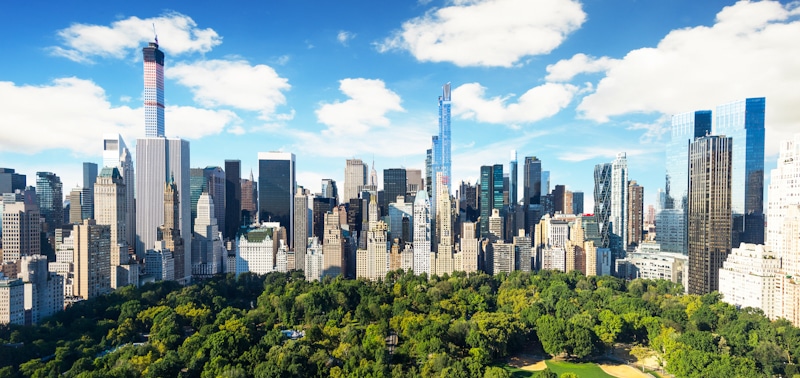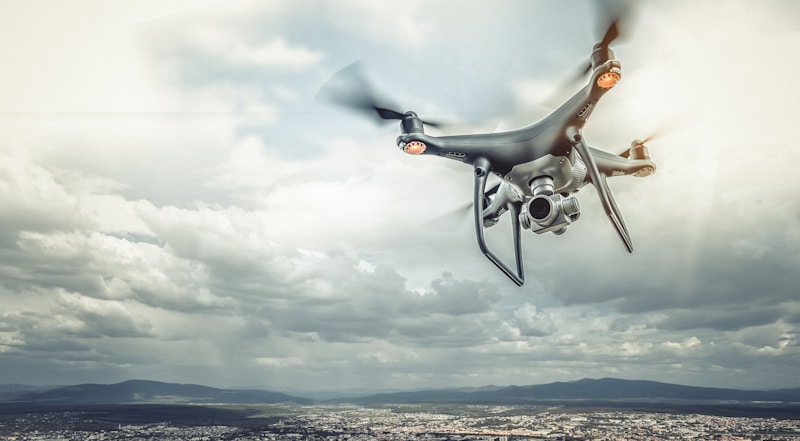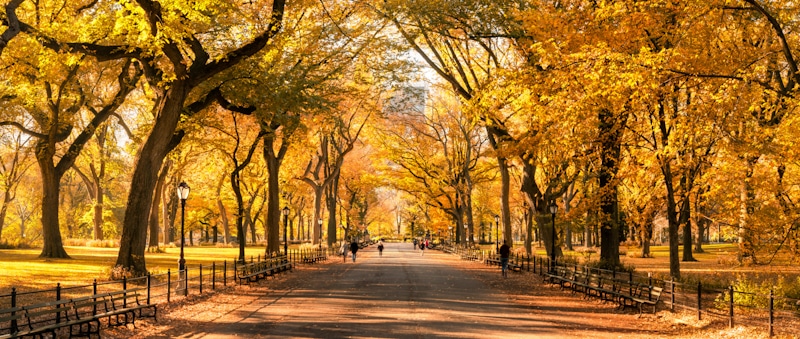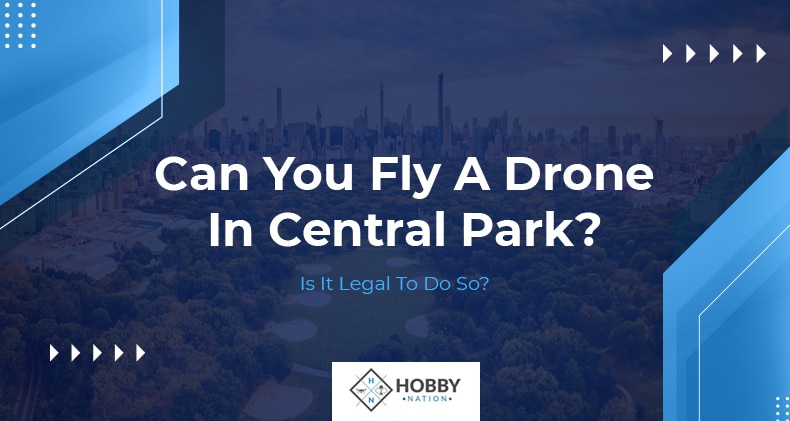Drones are becoming increasingly common of late. They are not just fun to use, but the UAVs (uncrewed aerial vehicles) also come in handy with professional projects. If you are in New York and are looking to capture the landscape of the city from above, Central Park is a spot you may be excited about capturing aerial visuals of.
Unfortunately, you cannot fly a drone in or near Central Park. The urban park is located right in the heart of Manhattan and flying a drone anywhere near or in NYC is banned. You may still want to check with the park's authorities, in case the rules changed, or some special provisions are in place.
Central Park serves as the ideal escape for the locals and the city's tourists from all the hustle and bustle of the city. Not to mention, in a place where people have come to seek peace and calm, a drone is the last thing they would like to encounter. To learn more about Central Park, the use of drones near or in the park, flying a drone over New York's state parks, etc., keep reading.

Central Park – A Brief Overview
Central Park is an 843-acre space. It's an urban park where people come to relax, play, and take a breather from the pressure and monotony of routine life. More than 40 million people frequent the place each year, besides birds, dogs, coyotes, etc. The place is a favorite of both locals and tourists alike.
The park is pretty much open throughout the year, opening at 6 in the morning and shutting its gates at 1:00 am. The place is open during summer, spring, fall, and most days during winter and monsoon. For scheduled maintenance and to allow rest after monsoons, the park is closed temporarily to the public during winter and the rainy months.
The Central Park Conservancy takes charge of the maintenance and employs a red flag system to indicate the park's closure. If you spot a red flag somewhere in the park or on its lawn, it means the park is shut down. Every winter, the park closes its gates so that the turf crew can care for the terrain and make sure the landscape is ready for visitors flocking in during spring.
Why is a Drone Not Allowed in or Near Central Park?
New York City is the most densely populated city in the United States, and Central Park is arguably at the core of all the action. When a drone alights from or lands upon Central Park, the mini aircraft is highly likely to become a major source of annoyance and disrupt all activities in the region.
According to the NYC administration, flying drones in the city is illegal. While "illegal" could imply different things, it's safe to assume fines and/or imprisonment are in the offing for drone rule violations in or near the park. People have crashed their drones into city buildings in the past and been fined thousands of dollars for reckless endangerment.
How Could Drones Bother People in Central Park?
In case you didn't know, drones and crowded places/people do not mix well. A drone, as a result, is legally not allowed to soar over unsuspecting people, in Central Park or any other place. Flying a drone over individuals that are part of the drone crew is, however, acceptable.
An urban park like Central Park is likely to have several times more people than the crowd that's usually spotted in state or national parks. As a result, issues of nuisance created by drones only go up several times.
There are quite a few major issues linked with flying a drone near or above people. Multiple incidents of people getting injured due to irresponsible drone usage have been documented in the past (not necessarily in Central Park, but other places where drones were operated over people).
Besides causing physical harm, drones can also be a constant visual and sonic bother. Being constantly aware that a drone is in the vicinity or hovering around could hinder people from entering a state of relaxation or mindfulness when in the park. The constant noise the drone makes can prevent people from communing with nature too.
Not to mention, the animals visiting the park could be at unease too or may react strangely upon seeing the drone, causing further annoyance, or even posing a threat to their owners or other people in the park.
Actual Past Incidents That Purportedly Led to the Banning of Drones in or Near Parks
National, state, or city parks are no strangers to drones. Multiple unfortunate incidents involving drone use near these parks have rendered flying drones difficult in or near such parks. The following are some of the occurrences from the past:
- In September 2013, a quadcopter landed at Mount Rushmore right above Lincoln's head. Within hours after the drone was spotted, NPS (National Park Service) employees took to task six people at an ice cream shop near the National Memorial confiscating their mobile phones, memory cards, and passports.
- In May 2014, Zion National Park volunteers saw a drone flying eerily close to a bighorn sheep herd on the park's eastern side. As the drone approached the flock, the sheep started to scatter, with many young ones getting separated from adult sheep. When young sheep lose contact with their parents, the split could lead to their death.
- In August 2014, a tourist from the Netherlands inadvertently crashed their drone in the Grand Prismatic Spring. The tourist was trying to capture a bird's eye perspective of the spring, which apparently is the best view of the site.
- Another drone crash incident involving the Yellowstone National Park took place in September 2014. The German tourist found guilty of the act had his drone and memory card seized and was not allowed to visit the park for a year.
The above are only some of the many incidents that have forced authorities to draft laws against illegal drone use and take strict action against the offenders.

Flying a Drone in New York State Parks
Unlike flying a drone in Central Park, the rules concerning flying UAVs in NY state parks is not clear.
Generally, state parks allow drones, except when there are active orders prohibiting the use of the quadcopter. The prohibitions could be for different reasons, such as protecting threatened species, safeguarding natural and cultural resources, mitigating fire risks, recreational conflicts, public safety, park unit classification, keeping up visitor experience privacy, etc.
Even if there are no clear orders in place, get in touch with the park's authorities to confirm the same or learn about it more. If you fly a drone in or near a New York state park or a park in any other state in the country, authorities could stop the flight and take the drone out or seize it from you.
If you are keen on flying a drone above any of New York's state parks, it's advised you get in touch with the concerned park's authorities to learn more. The following are some of the NY state parks that could be ideal spots to fly drones:
- Letchworth State Park
- Robert H. Treman State Park
- Rockefeller State Park Preserve
- Gantry Plaza State Park
- Minnewaska State Park Preserve
- Buttermilk Falls State Park
- Bear Mountain State Park
- Saratoga Spa State Park
- Allegany State Park
- Point Au Roche State Park
If you are not interested in state parks or are not too keen on traveling away from NYC to capture drone shots, the following public parks may be ideal:
- Calvert Vaux Park, Marine Park (Brooklyn)
- La Tourette Park (Staten Island)
- Flushing Meadows Corona Park, Forest Park (Queens)
These parks have designated model aircraft areas or fields. The Brooklyn parks require a premium membership to fly drones, however. Contact the parks' authorities before launching your drone from within the spaces assigned for drones.
General Drone Flying Rules in New York
It should now be clear that flying a drone in New York is pretty much out of the question. With state parks, you stand a chance, though.
Whether you get permission to fly in or above public or state park, the following are some rules to strictly abide by:
- Always keep the drone below 400 feet (122 meters) from the ground.
- Ensure the UAV stays visible to your naked eye throughout the flight. Being able to see it virtually on a digital screen is no alternative.
- Steer clear of crewed aircraft operations. When you keep the flight under 400 feet, you are unlikely to encounter airplanes. But helicopters may come close, at times flying at around 500 feet from the ground. If you happen to spot a chopper, abort flight or steer clear. Do not expect the copter to make wayfor your drone, as the pilot will be highly unlikely to spot or even anticipate a drone in the first place.
- Do not fly your drone during reduced visibility or at night, in high winds, or when the weather conditions are not necessarily suitable.
- The mini aircraft should not weigh 55 lbs (24.9kg) or more, and you should not have consumed drugs or alcohol either.
- If there are water treatment facilities, power stations, busy roadways, correctional facilities, or any other sensitive infrastructure close to the park, do not fly your drone over or near them.
- You should always avoid reckless or irresponsible use of the drone. Even if there are no people in or near the state park, careless drone handling could still damage park property when the UAV crashes due to improper handling.
Suppose the drone is more than 55 lbs or the flight is for commercial purposes. In that case, the FAA mandates seeking authorization from the particular park's authorities, usually in the form of a permit. FAA approval is also required. For the permit, the park's authorities would ask for an FAA authorization copy.

Commercial drone usage is anything that's carried out for personal projects or on behalf of clients. It includes filming for clients or selling aerial videography or photography, surveying, carrying out inspections, etc. Using the drone for research or educational purposes also requires FAA approval.
Conclusion
As alluded to above, drone bans have not been around since the advent of the mini aircraft. The bans have been more reactive than precautionary. In other words, the laws were instituted only after incidents of drones hampering the public were documented.
Between the park restrictions, population, city airports, etc., it's virtually impossible to fly a drone over New York and not get held. Even if you manage to fly the drone in Central Park without getting caught by the authorities (which is highly unlikely), locals or visitors to the park could call 911 and bring you to book.
Shawn Manaher loves to play with new toys and dive into new hobbies. As a serial entrepreneur, work definitely comes first but there is always room for hobbies.

